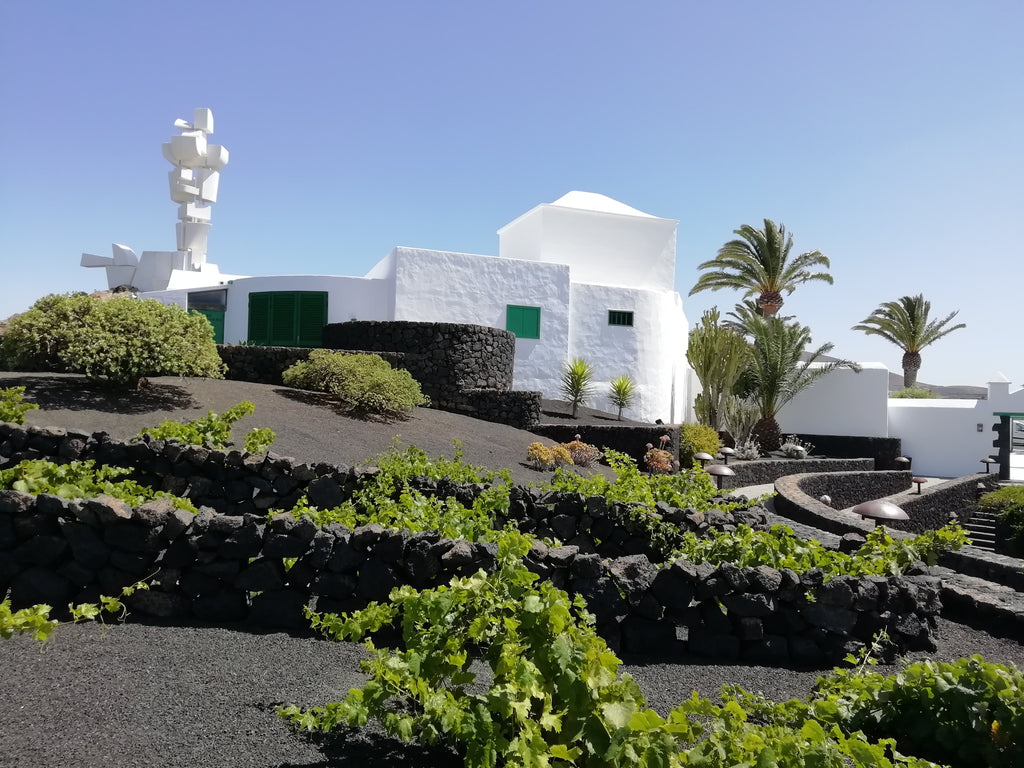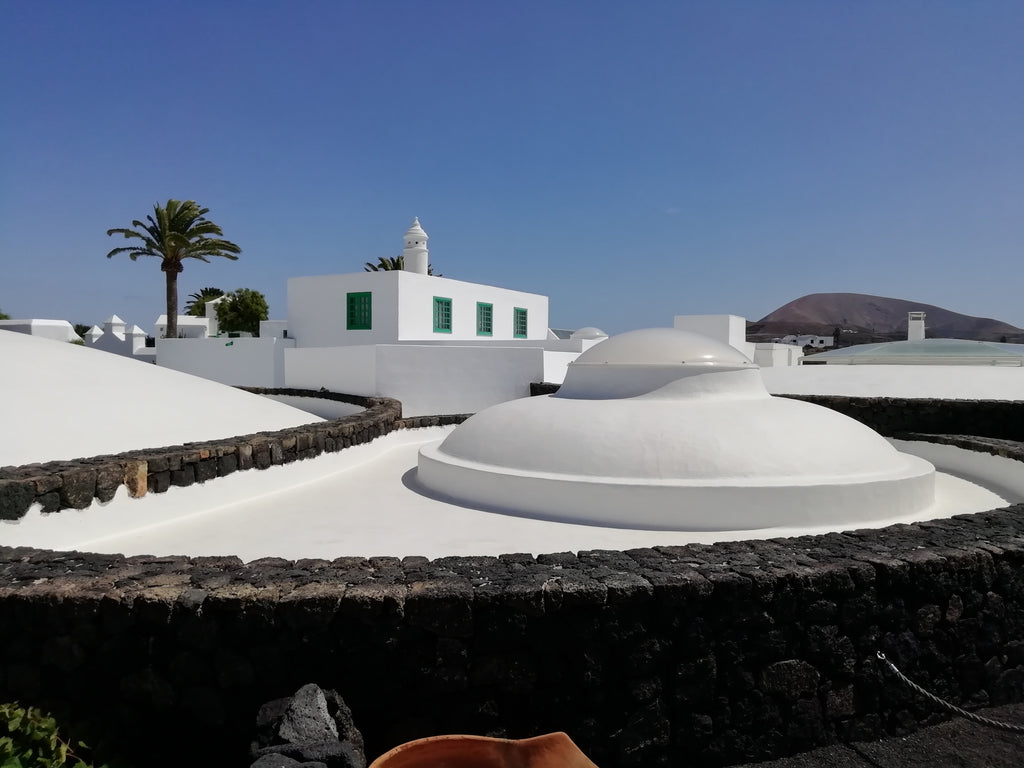Architecture Shaped by the Land
Share
For the next few blog posts, I'm going to be focusing on the architecture of Lanzarote. For those of you who have not had the good fortune to visit this island, I highly recommend a visit. There are some fascinating sights to see on this volcanic island. In particular, the legacy of artist, architect and visionary Cesar Manrique is truly inspirational. He was from the island, and helped to shape the development of tourism on Lanzarote aesthetically, sustainably and sympathetically.

So the first stop is the Museo del Campesino, which Cesar Manrique helped to set up. This is a museum dedicated to the farming methods of the island - and does a great job of demonstrating how this shaped the buildings on the island. Above, you can see the low walls built around grape vines, which have been sunk down into the volcanic soil, so they can collect any moisture available.

Here you can see the roof structures. They are topped by domed cupolas, with a light vent at the top, now covered in glass. They look almost space age. The buildings are painted white to reflect the heat, as is the case in many hot countries.

More walls built out of lava, this time sinking down in the courtyard of the museum, leading to a cool, underground restaurant. All round the courtyard, there are traditional crafts people - such as leather workers, cheese makers and people who make cochineal dye. It is a fascinating, beautiful place to visit, and is a wonderful introduction both to the architecture of Lanzarote and the ideas of Cesar Manrique. It makes you appreciate how hardy the people of Lanzartoe were to carve a living out of this hostile landscape.
